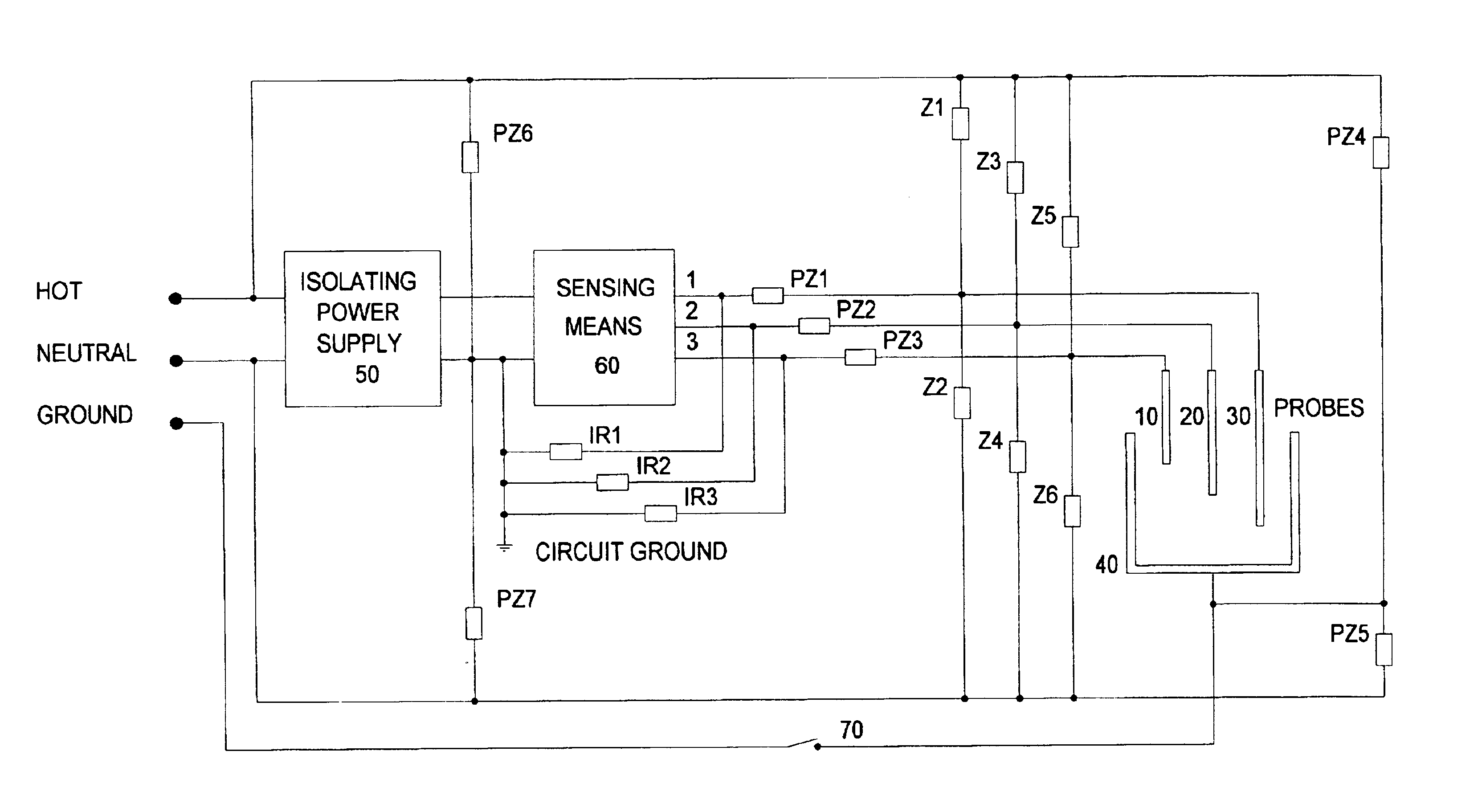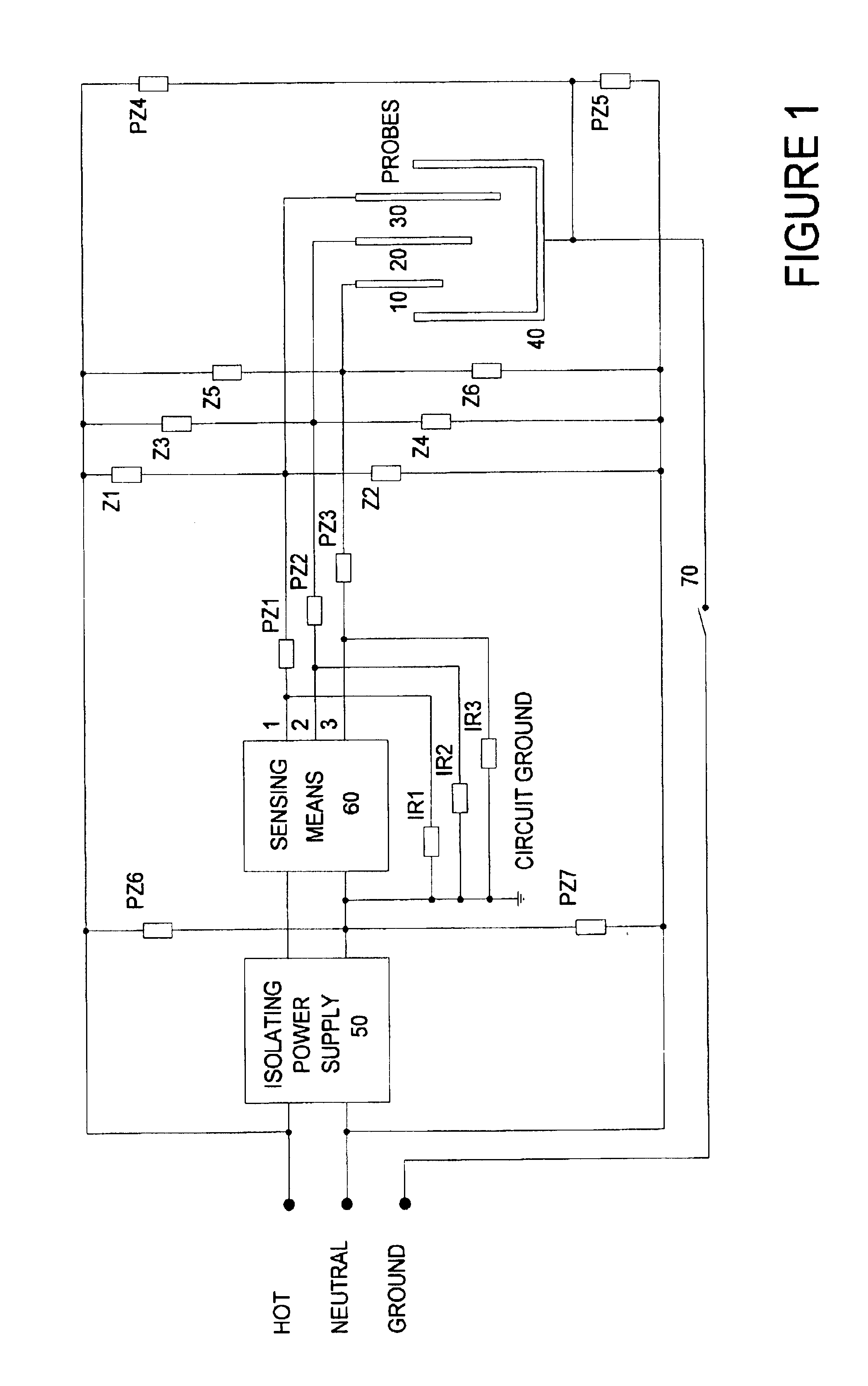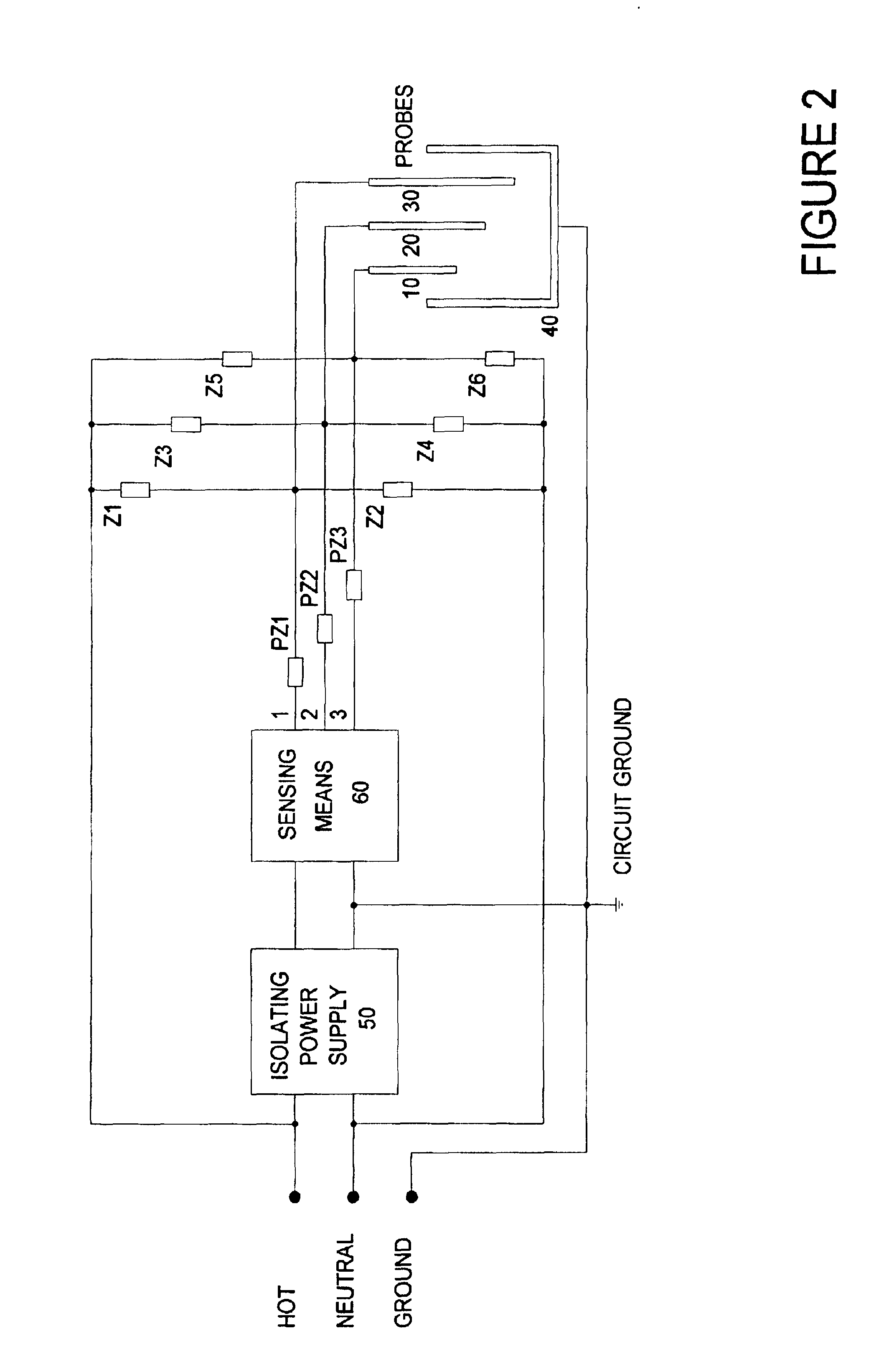Safe fluid detection in AC powered devices
a technology of ac powered devices and fluid detection, applied in the direction of liquid/fluent solid measurement, level indicators by physical variable measurement, instruments, etc., can solve the problems of fluid which is not safe, shock or worse, and the inability to assume the connection to the ground
- Summary
- Abstract
- Description
- Claims
- Application Information
AI Technical Summary
Benefits of technology
Problems solved by technology
Method used
Image
Examples
Embodiment Construction
Although both the following embodiments use 120 v AC as the source of current used to detect fluid in washing machines it is to be understood that the inventor contemplates the invention being applied to other devices powered by the same or other AC voltage, using AC or an ungrounded supply as a source of detecting current.
The preferred embodiment senses the presence of water in a washing machine having three fill levels using the circuit in FIG. 1. Probes 10-30 are used to sense water at levels high, medium and low respectively. The clothes basket and chassis of the washer are in common, together they form probe 40. When present the water lowers the impedance between the probes. The sensing means 60 detects the change in impedance to determine the water level.
When the washer is correctly installed the connection represented by 70 grounds probe 40. When the connection to ground is not made, connection 70 open, probe 40 is floating. The sensing means 60 functions correctly both when ...
PUM
 Login to View More
Login to View More Abstract
Description
Claims
Application Information
 Login to View More
Login to View More - R&D
- Intellectual Property
- Life Sciences
- Materials
- Tech Scout
- Unparalleled Data Quality
- Higher Quality Content
- 60% Fewer Hallucinations
Browse by: Latest US Patents, China's latest patents, Technical Efficacy Thesaurus, Application Domain, Technology Topic, Popular Technical Reports.
© 2025 PatSnap. All rights reserved.Legal|Privacy policy|Modern Slavery Act Transparency Statement|Sitemap|About US| Contact US: help@patsnap.com



